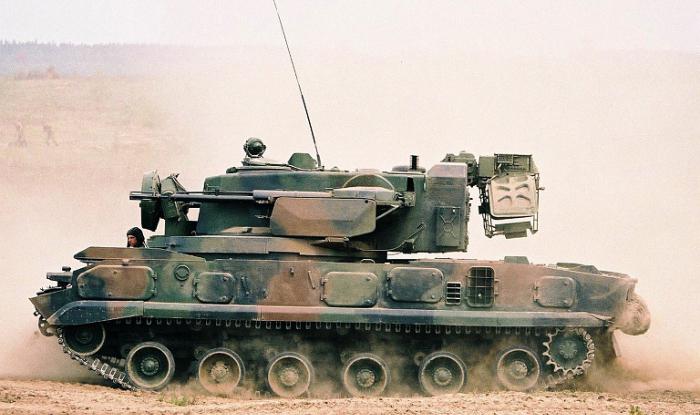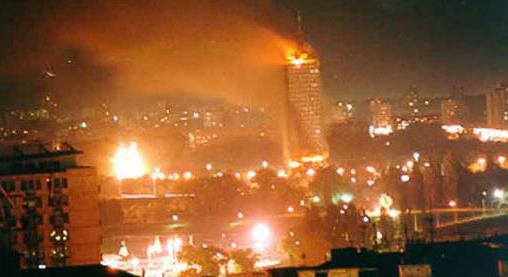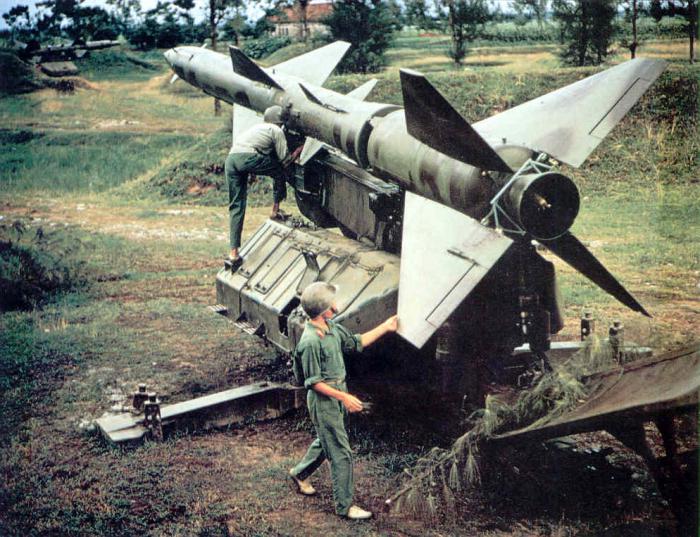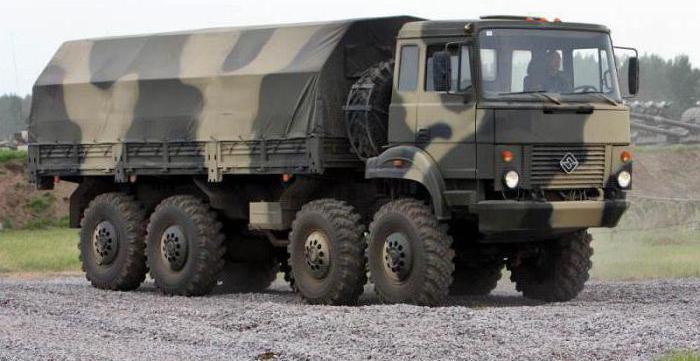"Tunguska" (anti-aircraft missile and gun system): description, main characteristics
As the means of airAttacks of a credible adversary in the late sixties required new air defense systems. Each of the means of combating flying targets had its own merits, but there were also some shortcomings. One of the attempts to create a universal weapon capable of destroying targets at different heights, moving at different speeds, was the Soviet TPRK "Tunguska." About what is hidden behind this code name and what were the prerequisites for its appearance in service, this article will be discussed.

A missile or an anti-aircraft gun?
In the second half of the 20th century, the main meansAir Defense became a rocket. Its advantages were evident during the famous incident of 1960, when a spy plane, flying at an unattainable height, was shot down by Soviet air defense. The rocket has a speed greater than any artillery shell, and it gets higher. It has, however, a significant drawback - the price, but behind it, when there is a question of security of air lines, it is not worth standing. In the early 80's, the Soviet Army received a 2c6 Tunguska air defense missile system, a mobile complex combining both missile and artillery weapons. Such opportunities, combining "two in one", at that time had not one system of air defense in the world. In order to realize the urgent need for this type of weapons, a scrupulous analysis of modern military conflicts, happening then, fortunately, abroad of our country, was required.

Experience in the use of SZU and the general concept of "Tunguska"
1973, the Middle East. During the Yom Kippur War, Soviet military officers assisted the Arab countries involved in the conflict, including Egypt.
On October 15, the tracking stations of Egypt reported on the group of Israeli "Phantoms" approaching from the Mediterranean Sea, consisting of dozens of aircraft. They walked at low altitude, going over the Nile Delta.
The enemy was the Egyptian airfields. So the Israeli Air Force pilots tried to avoid the risk of being shot down by Soviet-made surface-to-air missiles capable of hitting planes flying at medium and high altitudes, but they were in for an unpleasant surprise. Among the numerous tributaries at the site of the confluence of the ancient river in the sea, the Egyptians placed anti-aircraft self-propelled units "Shilka" on rafts-pontoons, literally piercing the planes and fuselages of the "Phantoms" with their quick-firing cannons. These ZSUs had their own radar and very good automatics, which helped guide the target fire, and were also used by the troops of North Vietnam in repelling American aggression. In a sense, her successor was ZSU "Tunguska". Air defense missile systems had restrictions on the lower limit of altitude, and anti-aircraft self-propelled units - on the upper limit. And in the USSR they decided to combine the capabilities of these two types of anti-aircraft in one system.
Varieties, modifications and names
The complex entered the service of the Soviet Army in1982, immediately after the release of the Ulyanovsk Mechanical Plant MRP first experimental batch of machines. From the very beginning, the project had a neck of total secrecy, which explains some of the discrepancies in the coding, numbers and letters that it was designated in open sources. Sometimes in the press the name 2C16 ("Tunguska") appears. The anti-aircraft missile system is more correctly designated 2C6, apparently there was a typo, although it is possible that the "16" is also some kind. Perfection of military equipment is carried out constantly, this is a normal practice in all armies of the world. In 1990 appeared "Tunguska-M". The anti-aircraft cannon missile system was modernized and received a new control system scheme that included a laser rangefinder, a "friend-to-another" detector, and the power plant was duplicated by an auxiliary power unit.
Work on modernization has developed afterthe collapse of the USSR in the difficult 90-ies. The result was a cannon-missile complex "Tunguska-M1", the description of which became more accessible, due to the fact that this modification was exported, in particular, to India. The code used most often is 2K22. This is the factory designation of the Tunguska missile defense system. The anti-aircraft cannon-missile system also has a NATO "name" - "Grison SA-19".

Electronic eyes and brain
From the very name of the complex it is clear that itsArmament consists of two components - artillery and antiaircraft missile. Both these elements have individual guidance systems, but radars that provide information about the air situation, they have common (in two ranges). It is these "eyes" that are looking for a target in a circular mode. Sector search is provided by an escort station, and in the case of visual contact, the use of optical means is acceptable.
The newest system is able not only to determine its own or someone else's aircraft, but also to reliably report its state belonging to a distance of up to 18 km.
2С6 (or ЗРПК 2С16) Tunguska can drivesupport of air targets on several algorithms (inertial, three-coordinate, angular two-coordinate) using the data of its own radar or external radar posts. The built-in onboard computer performs the necessary calculations. The transition to a specific method of controlling the escort or shooting is automatic, depending on the degree of electronic countermeasures and the level of interference. If automatic calculations can not be made, the fire is manually controlled.
Artillery
Self-propelled antiaircraft gun "Shilka" (ZSU-23-4)showed its high efficiency, but by the end of the 70s its TTX ceased to satisfy the Soviet military. Claims were made primarily to an inadequate caliber (22 mm), which caused a relatively small radius of damage. Guns ZRPK 2S16 "Tunguska" more powerful, thirty-millimeter, and their number has decreased by half, there were two. This is just the case, when it is better less, but better. The range of fire increased from 2.5 to 8 km, and the intensity of the fire, despite the smaller number of trunks, increased from 3.4 to 5 rounds per minute.

Rockets
The main weapon of the complex is a two-stageguided missile 9M311. It is very interesting. The first stage is solid fuel, which is a lightweight fiberglass shell filled with fuel. The second part, which directly targets the target, does not have an engine, it moves like an artillery shell at the expense of the momentum received during acceleration, but it can be controlled by a gas generator located in the tail section. The connection of the missile with the control post is optical, which provides an ideal noise immunity. Guidance is carried out in a semi-automatic radio command mode with the use of the letter frequencies, established immediately before launch from the Tunguska missile defense system. The anti-aircraft missile and gun system by its circuitry excludes the possibility of electronic interception or redirection of the missile. For a guaranteed defeat, a blow against the target is not needed, the fuse will ensure the expansion of the rod impact elements at the desired distance in a non-contact mode. Launchers eight.
Chassis
Mobility of air defense elements in the front zone,for actions in which, in fact, the complex is intended, it is impossible without a powerful, reliable and high-speed chassis with high cross-country capability. In order to avoid unnecessary waste, it was decided to mount a 2K22 Tunguska anti-aircraft missile and cannon system on the undercarriage of the GM-352 previously developed self-propelled unit "Osa". The speed that the car develops along the highway is 65 km / h, in conditions of off-road or steep terrain it is naturally lower (from 10 to 40 km / h). Diesel engine V-46-2S1 with a capacity of 710 liters. from. provides a lifting angle of up to 35 °. Suspensions of track track rollers are individual, with a hydropneumatic drive, which includes the adjustment of the height of the hoist over the ground.

Crew
Protection of personnel is ensuredanti-bullet and anti-fragmentation armor of the all-welded case. In the bow of the car the driver's seat is located, except for him, three more people in the mobile tower (commander, radar operator and shooter) are the crew of the Tunguska missile system. The anti-aircraft missile and cannon complex reacts to changes in the situation for 8 seconds, its recharging (using a special machine based on KamAZ-43101) takes 16 minutes.
Such a time frame requires excellent training and high qualification, achieved by continuing academic work.

The creators of the complex
Special words deserve the chief designersystem - A. Shipunov, as well as VP Griazev, who designed the guns, and the main specialist in rockets - VM Kuznetsov, whose efforts were created "Tunguska". The anti-aircraft missile and cannon system was the result of the cooperation of many enterprises of the USSR. The crawler chassis was manufactured in Minsk, at a tractor factory, the guidance systems were assembled and debugged on the "Signal", optics - at the Leningrad LOMO. Other scientific and production organizations of the Soviet Union took part in the work.
Artillery armament was produced in Tula, rockets were collected in Kirov ("Mayak").
Experience of application
At the moment there is no more powerfulmobile air defense system than Tunguska. The anti-aircraft cannon-missile system, however, has not yet been used for its intended purpose. During the fighting in the Chechen Republic, it was used to fire fire at ground targets, but for this purpose there are specialized types of equipment and ammunition. The armor protection of the 2K22 was not sufficient to conduct a land war. After twenty of the tens of Tunguska-M1 missile systems were damaged (mainly as a result of RPG shots), the command came to a logical conclusion about the poor effectiveness of air defense weapons in the conditions of guerrilla warfare. Consolation could be the absence of losses among personnel.

Organizational structure
The Tunguska-M air defense complex is designed forDestruction of such complex targets as helicopters and low-flying cruise missiles. In a dynamic battle, each such machine can make independent decisions, guided by operational conditions, but the most effective is provided by group application. For this purpose, the appropriate army command structures are organized.
In each platoon consisting of four ZRPKTunguska, an anti-aircraft missile and cannon system equipped with the Rangier centralized command post, is commander, forming, in conjunction with a platoon armed with the Strela missile system, a larger unit - a mobile missile-artillery anti-aircraft battery. In turn, the batteries are subordinated to the divisional or regimental control structure.








